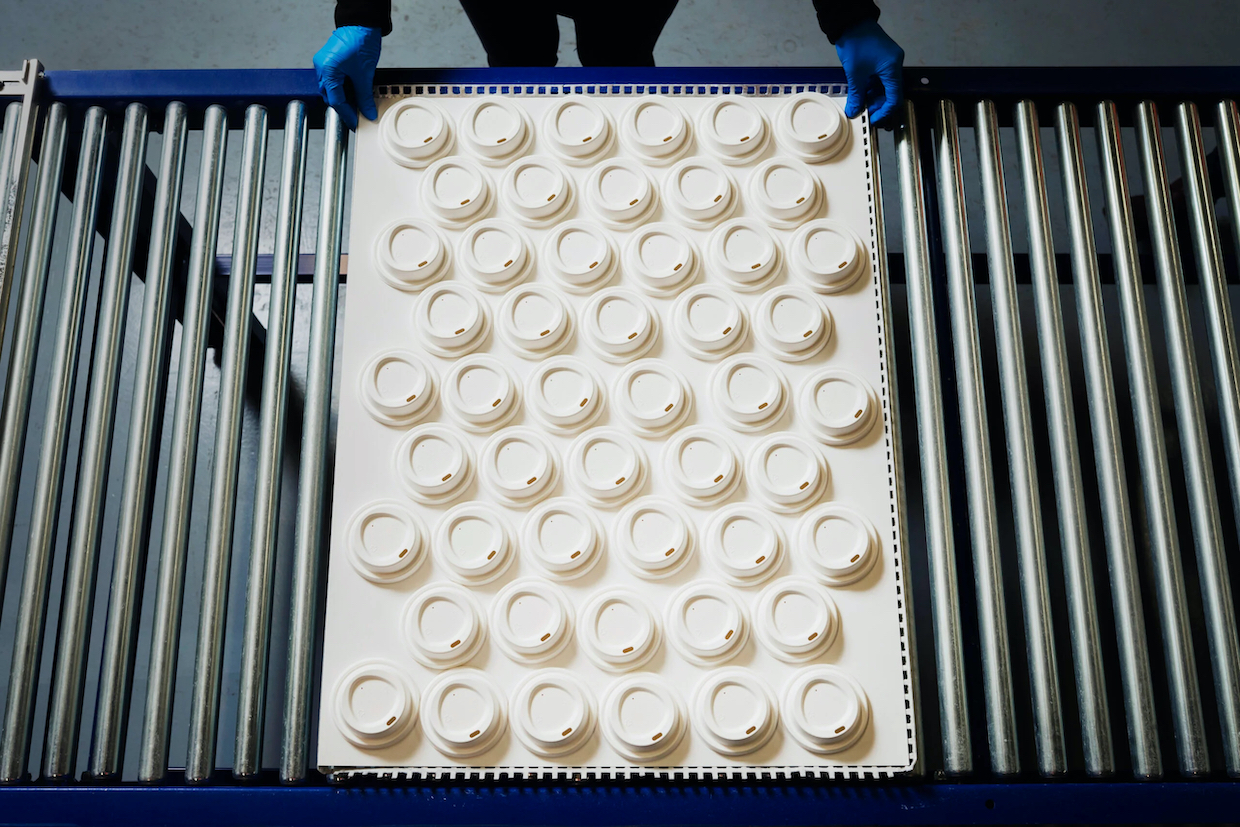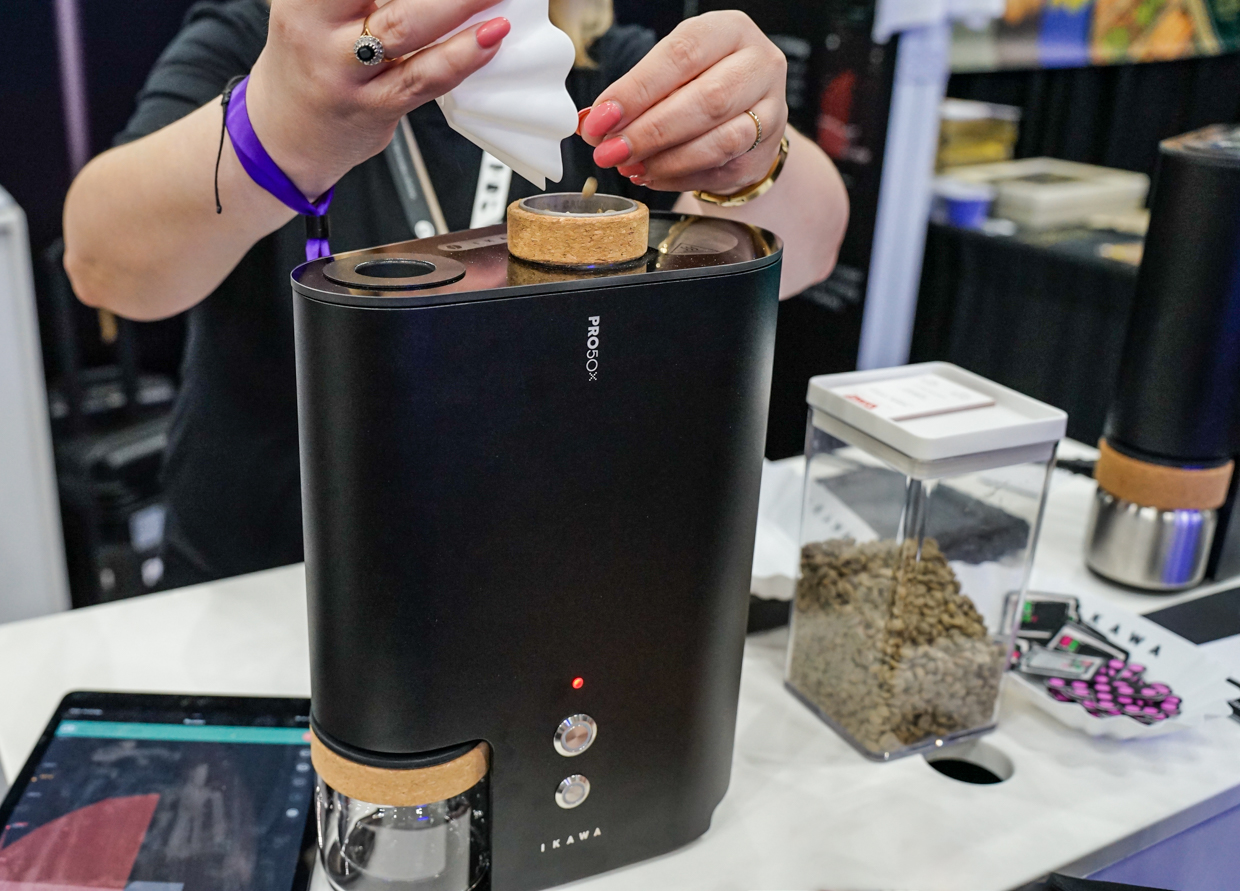The design of most coffee equipment was once restricted by engineering. The earliest versions of espresso machines, for example, were huge vertical columns designed to accommodate large, cumbersome boilers. Today, thanks to innovative new technology, they are sleek, futuristic machines that are increasingly compact.
Simultaneously, consumers have become more discerning about the aesthetic appeal of their coffee equipment. Capsule machines, for instance, have started to mimic espresso machine design, incorporating levers and spouts that suggest they require a certain level of expertise to operate, but don’t necessarily serve a practical purpose.
To be considered high-quality, coffee equipment undoubtedly needs to be functional. But as the market becomes more competitive, visual appeal is also essential to standing out.
I spoke with Kelli Rognlie, Director of Marketing at Seattle Coffee Gear, for her insight on why it’s important to balance both design and functionality.
You may also like our article on the history and evolution of the espresso machine.


How the design of coffee equipment has changed
The design of most coffee equipment has long been notable, even if it hasn’t been for pure aesthetic purposes. The early great chrome pillar-shaped espresso machines were designed around huge boilers, but still stunned coffee drinkers, who had never experienced such efficient steam-powered brewing before.
Over the last few decades, the design of coffee equipment has advanced considerably, transcending most engineering limitations and encompassing more visual aspects. Espresso machines further illustrate this example; they have massively reduced in size and appear more modern than ever, and the technology has only continued to become more advanced and sophisticated.
In many cases, both the design and performance of coffee equipment have evolved together. They often complement each other, meeting the need for both functionality and visual appeal that coffee professionals and enthusiasts increasingly demand.
La Marzocco’s recent collaboration with Porsche, for instance, signifies this. The companies designed two limited-edition espresso machines and a grinder, each product giving a nod to the car brand’s iconic Carrera GT3 or 911 Carrera RSR models. For La Marzocco, partnering with Porsche – a car manufacturer known not only for its prestige but also its reliability and longevity – reinforces its premium positioning and commitment to quality, while also highlighting an emphasis on unique and premium design.
Form over function?
In other cases, however, the design of coffee equipment is seemingly overtaking functionality. Capsule machine manufacturers, for instance, are increasingly incorporating elements commonly found on espresso machines, such as “portafilters” and pressure gauges, that offer no practical use or advantages.
Even non-coffee brands are tapping into the trend. Cultivation Objects’ new Anticline moka pot – which costs US $650 – looks like an art piece, yet serves the same purpose as a traditional stove-top coffee maker.
The reasons for this could be simple: authenticity and nostalgia. The design of espresso machines symbolises historic Italian café culture and baristas’ skilled labour, which consumers increasingly appreciate, but often don’t have the knowledge or time to replicate. A capsule machine that mimics the technical aspects of an espresso machine, but operated by pressing a button, certainly meets this demand.
“I wouldn’t consider this trend bad or good; it’s just the evolution and expansion of making craft coffee at home,” says Kelli Rognlie, the director of marketing at Seattle Coffee Gear, a coffee equipment distributor and educational platform in the US. “The expansion of social media and easy access to content of baristas pulling espresso shots or pouring extraordinary latte art has opened a world for consumers to understand the joys of making coffee.
“It’s not surprising that consumers want their experience to feel more authentic to what they see on Instagram or TikTok, even if they might still be using a Nespresso machine,” she adds.
How design influences consumer behaviour
Research shows consumers are more inclined to choose products or adopt technology that feels familiar, reinforcing trust and lowering the perceived barrier to entry. In the case of capsule machines, a growing number of consumers want to invest in products that assert reliability and quality. Capsule machines that incorporate elements of traditional espresso machines evoke these associations of familiarity and prestige, and therefore create more emotional connections between the product and the user.
“I think we might see more features added to lower price-point machines that give a premium feeling, but in a modified way,” Kelli says. “For instance, the inclusion of a modified portafilter isn’t functional, but it gets the consumer into a mindset of working with the machine, instead of just pressing a button.”
Ultimately, this demonstrates how more consumers (especially those new to specialty coffee) demand both craftsmanship and convenience. The espresso machine aesthetic and add-ons provide capsule drinkers with an opportunity to feel more involved in the coffee making process, without needing to learn the skills required to prepare shots of espresso.


Why the prosumer market demands both design and function
Sitting somewhere between an industry professional and an educated consumer, prosumers are willing to invest in premium equipment that allows them to recreate a café-quality experience at home.
As the prosumer market has proliferated, particularly following the pandemic, coffee equipment manufacturers have been pushed to stand out with new, eye-catching designs, while still offering the expected level of performance from their products.
Similar to how coffee shops place their espresso machines as centrepieces, coffee enthusiasts are increasingly curating Instagram-worthy home brewing setups. At the same time, there has been an increase in coffee influencers, most notably Lance Hedrick and James Hoffmann, reviewing equipment. This brings further attention to the design and performance of coffee equipment at different price points, helping consumers become more educated about a range of products.
“Both design and functionality will need to keep pace with trends rather than just a machine looking good on someone’s counter,” Kelli says. “Otherwise, the machine’s life cycle will be short-lived, and the home barista community will voice their opinions on it, so it’s wise to make a great product first.”
A winning combination
As the market becomes more competitive, some brands will want to create a more noticeable distinction between their lower-price-point and premium equipment options. For equipment targeted at the prosumer market, in particular, to find success, aesthetic appeal, technology, and functionality need to be combined to add value to the user experience.
Ultimately, performance will be the key determining factor in a product’s success.
“We’re starting to see more customers question the use of apps and technology in espresso machines, and we see a split in whether the response is positive or negative,” Kelli says. “Visual design is always important, but many professional machines prioritise greater function.
“We often don’t see visual design changes from some of our Italian heritage brands for ten-plus years. Good design is timeless when it comes to exceptional espresso equipment manufacturers.”


The design of coffee equipment, both in commercial and home settings, has evolved significantly in recent years. With the rising prominence of product reviews from influential coffee personalities, consumers have become more aware of what they demand from their equipment.
While the design of lower-entry equipment may continue to mimic its more premium counterparts, the current emphasis on both design and functionality will persist in specialty coffee. Both industry professionals and prosumers will look to invest in machines and brewing accessories that meet their demand for visual appeal, consistency, and precision.
Enjoyed this? Then read our article on how to choose the right espresso machine for your coffee shop.
Photo credits: Seattle Coffee Gear
Perfect Daily Grind
Want to read more articles like this? Sign up for our newsletter!











